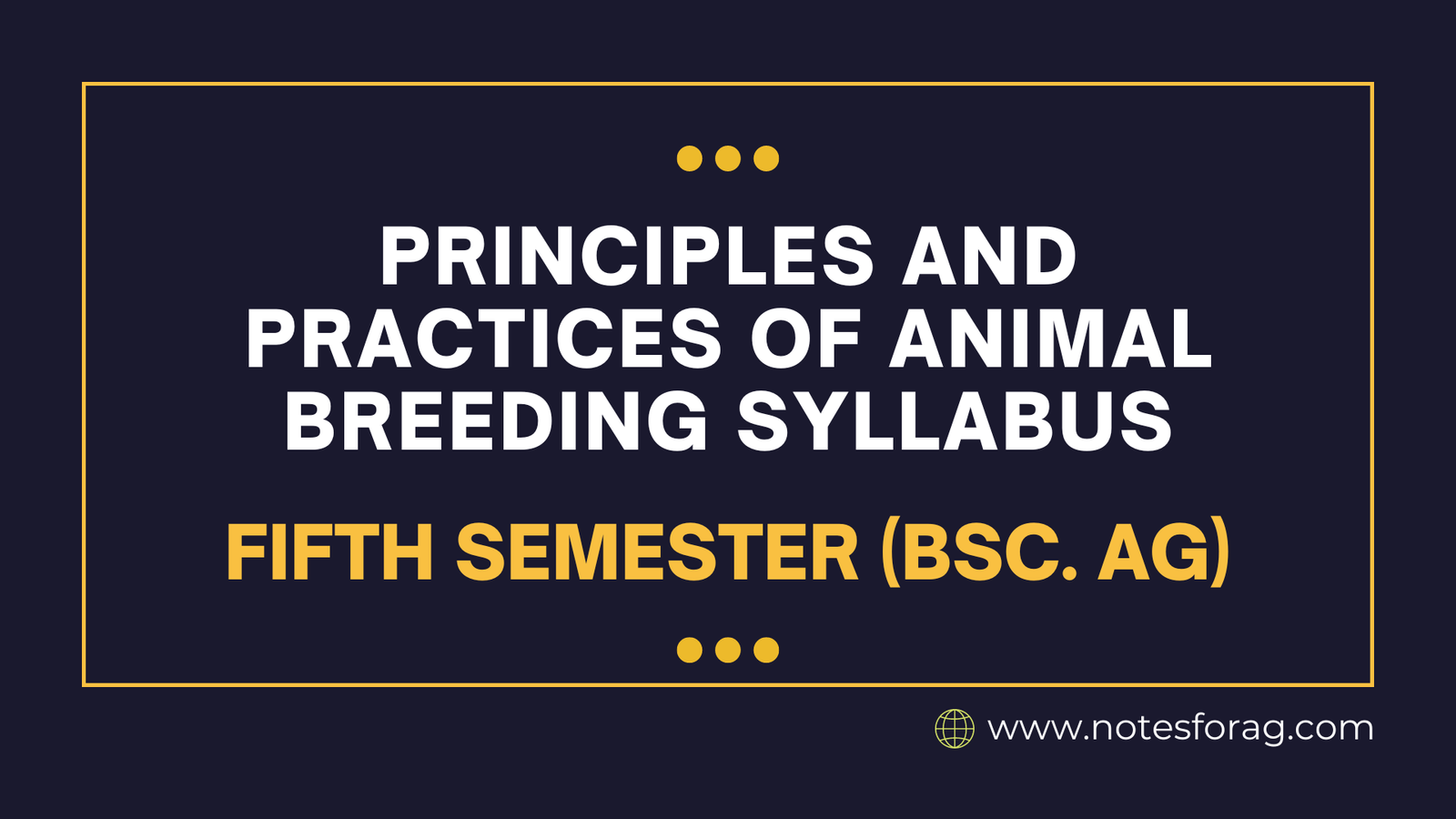| Course Code | ABN 301 |
| Course Title | Principles and Practices of Animal Breeding |
| Credit Hour | 3(2+1) |
| Full Marks | 75 |
| Theory | 50 |
| Practical | 25 |
Objectives
Upon completion of this course, the students will be able to understand the basic principles and fundamentals of animal breeding and the application of animal breeding techniques to improve the breeds of different species.
Syllabus of Principles and Practices of Animal Breeding in Bsc. Agriculture
Animal breeding is important, and its scope is in livestock improvement. Animal genetic resources and sustainable development of indigenous breeds. Rare breeds of different species of animals and their characteristics and economic values, the reason for being endangered, strategies and methods for conservation of AnGR, Variation and causes of variation, important of heredity and environment. Gene action (additive and non-additive). Concept of heritability and repeatability. Selection, selection response, selection limit, selection differential, methods and basis of selection, mating system, inbreeding, and outbreeding. Concept of genetic resistance to disease and parasites. Traits of the economic importance of different livestock species. Biotechnology in animal breeding, Nuclear transplantation, transgenic animal production, and its significance in genetic improvement of livestock.
Practical: Estimation of heritability and repeatability, means, breeding values and components of variances, calculation of inbreeding relation and coefficient, selection response, selection differential, genetic gain, probable breeding value, most probable producing ability, selection intensity, and selection index.
Course Outline
A. Theory
| S.N | Topic / Chapter Name | No. of Lectures. |
| 1 | Introduction, history, and importance of animals breeding | 2 |
| 2 | Animal genetic resources and sustainable development | 2 |
| 3 | Importance of indigenous breed and economic values | 2 |
| 4 | Rare breeds of different species of animals and their characteristics | 2 |
| 5 | Reason for being endangered, strategies for conservation | 2 |
| 6 | Variation and causes of variation | 2 |
| 7 | Importance of heredity and environment | 2 |
| 8 | Concept of heritability and repeatability | 2 |
| 9 | Selection (principal, basis, method, selection parameters) | 2 |
| 10 | Mating system (inbreeding, outbreeding) | 2 |
| 11 | Concept of Genetic resistance to diseases and parasites | 2 |
| 12 | Important Economic traits of livestock and poultry | 2 |
| 13 | Transgenic animals and their production | 2 |
| 14 | Animals biotechnology and recent advances in animals biotechnology | 4 |
| Total | 30 |
B. Practical
| S.N | Topic / Chapter Name | No. of Lectures. |
| 1 | Estimation of heritability by using regression and correlation | 1 |
| 2 | Estimation of heritability by using twin comparison and selection | 1 |
| 3 | Estimation of heritability by one way and nested design | 2 |
| 4 | Estimation of repeatability | 1 |
| 5 | Estimation of variance components and means | 2 |
| 6 | Breeding value, PBA, MPPA | 2 |
| 7 | Calculation of inbreeding relationship and coefficient | 2 |
| 8 | Estimation of selection parameters, selection index | 2 |
| 9 | Livestock farm data analysis and report writing | 2 |
| Total | 15 |
References
- Rendel I. J. Genetics and Animal Breeding. W.H. Freeman and Company.USA
- Lasley, J.F., 1988. Genetics of Livestock Improvement 3rd edition. Prentice-Hall. Inc., Englewood Cliffs, New Jersey.
- Lush J. L.1960.Animal Breeding Plans.Iowa State University Press, Ames, Iowa.
- Nicholl, D.S.T. 1994. An introduction to genetic engineering. Cambridge University Press.
- Stufflebeam C.E. 1989. Genetics of Domestic Animals. Prentice-Hall, Englewood Cliffs, New Jersay
- Warick and Legates, 1979. Breeding and Improvement of Farm Animals. Hutt, F.B. 1982. Animal Genetics Warwick and Legates, 1979. Breeding and Improvement of Farm Animals.
- Johanssan, I. And Rendel J.1968. Genetics and Animal Breeding

